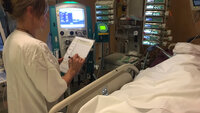Reported competence enhancement from participation in resource nurse cancer and palliative care networks
Participation in cancer and palliative care networks increased the registered nurses’ competence. Staff exchange training schemes and frequent participation in clinical practice days were also highly beneficial.















